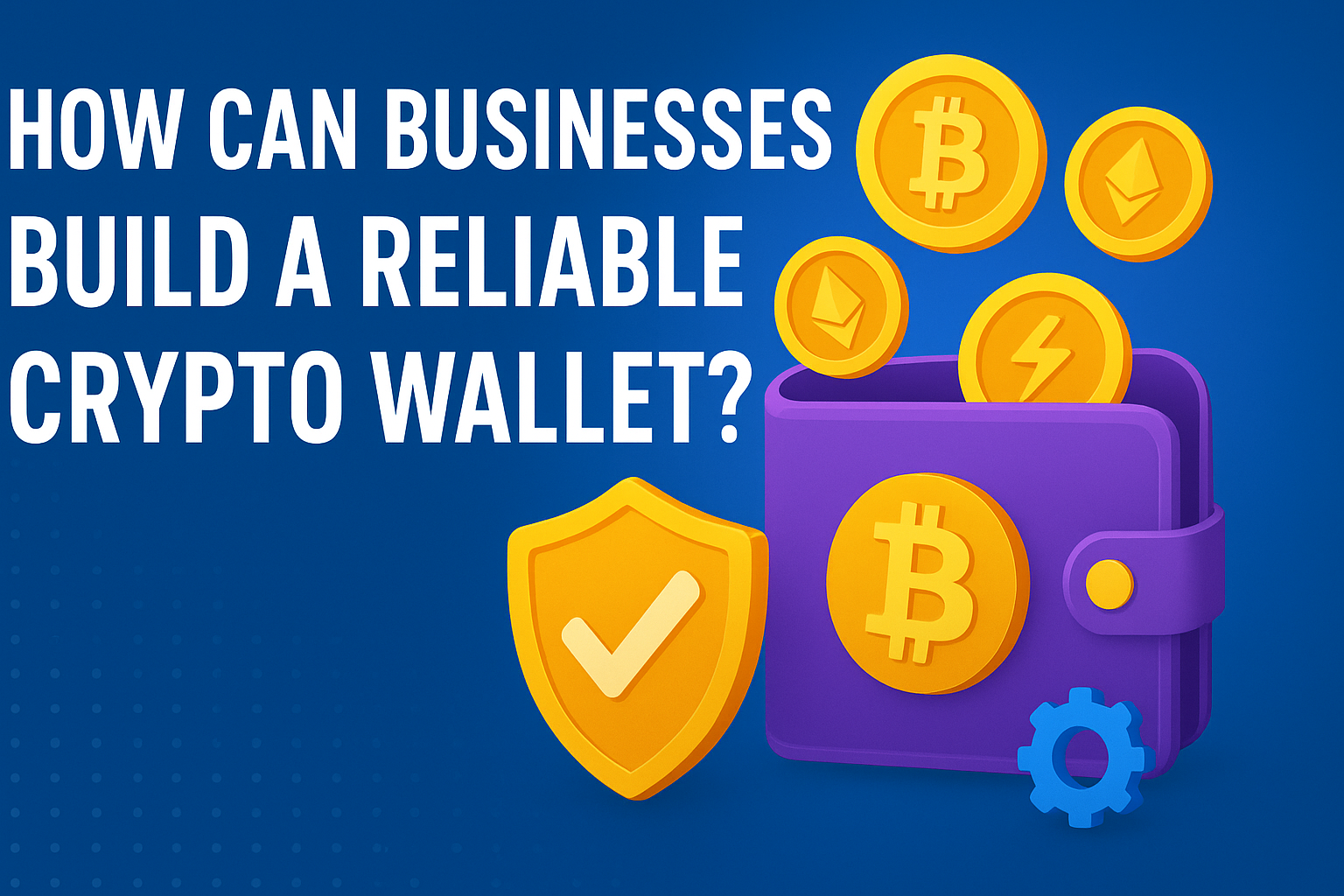How Can Businesses Build a Reliable Crypto Wallet?

The rise of digital currencies has transformed how people handle financial transactions. For businesses, providing a secure and efficient crypto wallet can open new opportunities for customer engagement and revenue streams. Developing a crypto wallet requires a careful blend of technology, security measures, and user experience considerations.
What Are the Core Components of a Crypto Wallet?
A crypto wallet serves as a digital vault for cryptocurrencies. At its core, it stores private and public keys, manages transaction data, and interacts with blockchain networks. The wallet can be classified into two main types: hot wallets and cold wallets.
-
Hot wallets are connected to the internet, allowing fast and convenient transactions. They are suitable for users who need frequent access to their assets but require strong cybersecurity measures.
-
Cold wallets operate offline, offering maximum security for long-term storage. They are less prone to hacking but can be less convenient for regular use.
For businesses, choosing the right type of wallet depends on the target audience and the volume of transactions expected.
How Do Security Measures Impact Wallet Development?
Security is the backbone of any crypto wallet. Hackers continuously target digital assets, making encryption and authentication critical. Implementing multi-signature technology during crypto wallet development ensures that transactions require approval from multiple parties, reducing the risk of unauthorized transfers.
Two-factor authentication (2FA) is another essential layer, requiring users to confirm identity through separate channels, such as SMS or authenticator apps. Regular security audits and penetration testing can detect vulnerabilities before malicious actors exploit them.
Additionally, businesses should consider end-to-end encryption for data storage and transfer. Keeping private keys offline in cold wallets or hardware modules can prevent theft while maintaining usability for legitimate transactions.
See more: Crypto Wallet App Development: Features, Benefits, and Costs
Which Features Make a Wallet User-Friendly?
A crypto wallet must not only be secure but also accessible. User experience plays a key role in adoption and retention. Essential features include:
-
Intuitive interface: Clear navigation and visual cues help users complete transactions quickly.
-
Transaction history: Displaying past transactions builds trust and transparency.
-
Multi-currency support: Users often hold different cryptocurrencies, so supporting multiple coins adds convenience.
-
Backup options: Recovery phrases or secure cloud storage ensures users can restore access in case of device loss.
Integrating these features makes the wallet appealing to both beginners and experienced users.
How Can Businesses Ensure Regulatory Compliance?
Compliance with local and international regulations is crucial when developing a crypto wallet. Anti-money laundering (AML) and know-your-customer (KYC) requirements must be implemented to prevent illegal activities.
Regular updates to policies and monitoring changes in regulations ensure that the wallet remains compliant. Partnering with legal advisors or consulting regulatory bodies can reduce the risk of fines or restrictions.
Which Technologies Drive Wallet Performance?
The performance of a crypto wallet depends on the underlying technology stack. Developers often use blockchain APIs, secure databases, and lightweight front-end frameworks for responsive design.
For mobile wallets, optimizing battery usage and network efficiency improves user satisfaction. On the server side, robust load balancing and caching techniques ensure smooth operation even during high traffic periods.
Integration with third-party services, such as exchanges or payment gateways, can expand wallet functionality without compromising security.
What Are Best Practices for Ongoing Maintenance?
A crypto wallet is not a one-time project. Continuous maintenance ensures security, usability, and compliance. Key practices include:
-
Regular software updates : Patch vulnerabilities and add new features.
-
User feedback integration : Collect insights to improve interface and functionality.
-
Monitoring for suspicious activity : Detect and respond to anomalies quickly.
-
Scalability planning : Ensure the system can handle growth in users and transaction volumes.
Adopting these practices helps maintain trust and reliability, which are critical in the crypto ecosystem.
Conclusion
Developing a crypto wallet requires balancing security, technology, and user experience. By implementing strong encryption, offering intuitive features, and adhering to regulatory standards, businesses can create a wallet that meets user expectations while safeguarding digital assets. Regular updates and monitoring further strengthen its reliability, making it a valuable tool in today's digital financial landscape.
- Art
- Causes
- Crafts
- Dance
- Drinks
- Film
- Fitness
- Food
- Games
- Gardening
- Health
- Home
- Literature
- Music
- Networking
- Other
- Party
- Religion
- Shopping
- Sports
- Theater
- Wellness


